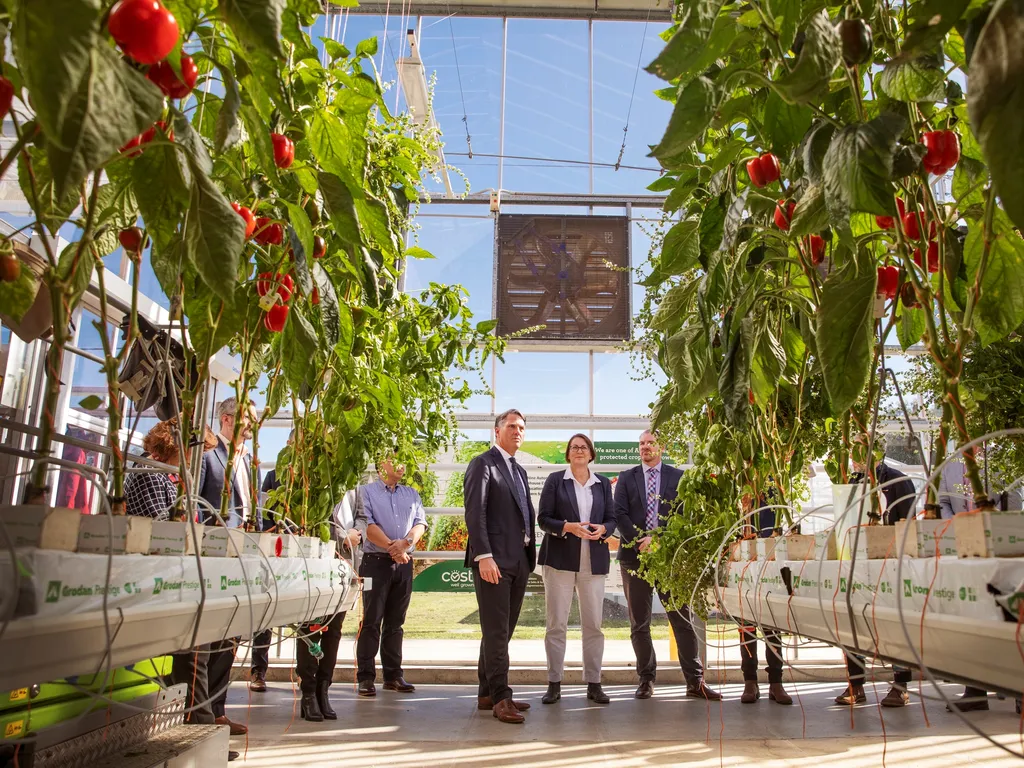In the heart of Western Sydney, a groundbreaking study led by Suhaib Malkawi at Western Sydney University’s School of Engineering, Design and Built Environment is reshaping the landscape of sustainable hydroponic farming. The research, published in the Journal of Sustainable Agriculture and Environment (or in English, the Journal of Sustainable Agriculture and Environment), explores an innovative approach to recycling hydroponic waste nutrient solutions, offering a promising solution for reducing fertilizer dependency and enhancing economic viability in the agricultural sector.
Malkawi and his team have developed a method to recover phosphorus from hydroponic waste nutrient solutions using alkali treatment, producing micro-calcium phosphate. This recovered precipitate is then converted into a liquid form, dubbed “Part C,” which can replace up to 40% of commercial fertilizers in hydroponic systems. The study’s pilot phase involved growing snow peas (Pisum sativum L.) in a controlled greenhouse environment, where the performance of the nutrient solution incorporating Part C was compared to a control system using traditional commercial fertilizers.
The results were striking. The test system required 33% less commercial fertilizer while maintaining comparable plant growth, yield, and nutrient uptake. “This is a significant step forward in sustainable agriculture,” Malkawi explained. “Not only does it reduce the need for commercial fertilizers, but it also minimizes waste and improves nutrient stability in the hydroponic system.”
One of the most compelling findings was the enhanced uptake of calcium and magnesium in plants grown with Part C. The recovered nutrient solution also contributed to improved pH and electrical conductivity (EC) stability, reducing the need for frequent nutrient adjustments. “This stability is crucial for large-scale hydroponic operations,” Malkawi noted. “It simplifies the management process and can lead to substantial cost savings.”
The economic analysis conducted as part of the study underscored the potential for significant cost reductions without compromising plant health or productivity. This is particularly relevant for the energy sector, which is increasingly looking towards sustainable and cost-effective agricultural practices to support its operations and supply chains.
The implications of this research extend beyond hydroponic farming. As the world grapples with the challenges of climate change and resource depletion, innovative solutions like phosphorus recovery and recycling offer a beacon of hope. “This technology has the potential to revolutionize not just hydroponic farming, but also other forms of agriculture that rely on nutrient solutions,” Malkawi said. “It’s a step towards a more sustainable and economically viable future.”
The study’s findings were published in the Journal of Sustainable Agriculture and Environment, a testament to its significance in the field of sustainable agriculture. As the agricultural sector continues to evolve, research like this will play a pivotal role in shaping the future of farming, ensuring that it is both sustainable and economically viable.
In the quest for sustainable agriculture, Malkawi’s research stands out as a beacon of innovation and practicality. By addressing the critical need for nutrient recycling and reducing dependency on commercial fertilizers, this study paves the way for a more sustainable and economically robust agricultural future. As the world looks towards a future where resources are scarce and environmental concerns are paramount, such advancements are not just welcome but essential.

